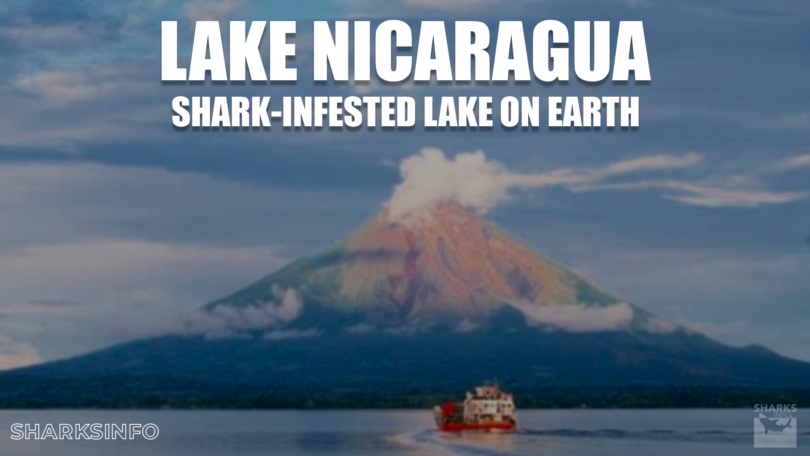There are almost 470 species of sharks and they have been around for 420 million years. The Sharks mostly live in oceans, and they do not live in freshwater as their bodies have more salt. Although, these species have powerful teeth and jaws, only the great white, the tiger, and the bull shark do fatal attacks on humans. Most lakes contain freshwater which makes it unsuitable for sharks which are adaptable to living in salty water. The Bull Sharks and river sharks are an exception as they can live in freshwater as well as salty water.

Nicaragua is famous for freshwater lakes, deep rivers, lush green forests, and immense volcanoes. The most fascinating fact about this lake is its wildlife and is home to freshwater sharks, sawfish, and tarpons. The most famous inhabitant of this lake is the Freshwater Shark. The Charcharinus leucas, also known as the sharks of Nicaragua.
In this guide, we will discuss the cover of the below outline:
Are Sharks Normal in Lake?
Lake Nicaragua: The Only Shark-Infested Lake on Earth
- Marine Life in Lake Nicaragua
- Sharks in Lake Nicaragua
- Ecological Threats to Lake Nicaragua
- Other Shark-Infested Lakes on Earth
Are Sharks Normal in Lake?
Sharks are the deadliest creatures that mostly live in oceans, and it is not normal for most sharks to live in lakes as they cannot survive in freshwater lakes. However, some species of sharks like Bull Sharks, can survive in the freshwater, salty and brackish water.
Lake Nicaragua: The Only Shark-Infested Lake on Earth
Lake Nicaragua is also known as Cocibolca or even Granada and is located in the western southern part of the country with a surface of 8,264Km². It is the 19th biggest lake in the world and is the largest lake in Central America. The Tipitapa River connects Lake Nicaragua with Lake Managua.
It is often referred to as the Sweat Sea by local people because of the lack of salt in the lake. Before the volcanic explosion, the Lake was an ocean bay. After the volcanic eruption, the lake has trapped various marine animals such as sharks, swordfish, and tarpon, and they have become used to their home, Lake Nicaragua.

Marine Life in Lake Nicaragua
Despite the freshwater of the lake, it contains several oceanic animal species such as reptiles, mammals, and amphibians; the lake’s shoreline is home to several ecosystems. The number of birds around the lake makes it more beautiful. About 40% of fish like sawfish, gasper, swordfish, and fine-toothed sawfish live in the lake; 16% of cichlids also live in the lake. This lake is also home to various freshwater shark species like the Caribbean Bull shark.
Sharks in Lake Nicaragua
The Bull shark is one of the most dangerous known shark species worldwide due to its aggressive nature, lives in Lake Nicaragua. The Freshwater Shark is generally known as the Caribbean Bull shark and is mostly found in the tropical and subtropical areas of the world. They have been evolving for thousands of years and managed to make a home in the largest shark lake in America.
The Bull Sharks can grow up to 11.5 ft. and weigh up to 500 lbs. Their teeth are sharp and needle-shaped, and they are generally killing machines. Bull Sharks aren’t picky eaters, and they have diverse diets; they feed on birds, turtles, and other fish.
This shark has come to Lake Nicaragua from the San Juan River and is highly tolerant of freshwater. Over time, the sharks started reproducing in the fresh water of the lake and their young ones became more adaptable to fresh water. The Bull Sharks not only live in Lake Nicaragua, but people have seen Bull Sharks in the Ganges River system in India and the Zambezi River in Africa. However, the sharks present in those waters are different from their siblings living in Lake Nicaragua.

The Bull Sharks are aggressive and are known to attack people. The local fisherman was afraid of these sharks, and they used to kill thousands of sharks each year. The population of the Sharks thus declined and now only a few are left.
Ecological Threats to Lake Nicaragua
The following are the three important ecological threats to Lake Nicaragua:
- The discharge of wastewater from urban areas like Rivas, Juigalpa, and Granda into Lake Nicaragua.
- The nearby agriculture haciendas are poorly affecting the lake.
- The major threat to freshwater diversity is the destruction or degradation of habitat.
Other Shark-Infested Lakes on Earth
The bodies of shark species are salt-filled, and they cannot thrive in freshwater. However, the Bull Sharks are freshwater sharks, and they are found in various freshwater bodies worldwide. This is because the bodies of Bull Sharks are less salty and can accept freshwater. In the below table, we have mentioned some other lakes with the most sharks and their location:
| Lake | Location | Sharks |
| Carbrook Golf Club | Queensland, Australia | Home for 12 Bull Sharks |
| Lake Pontchartrain, | Louisiana | Juvenile Bull Sharks, Garfish |
| Lake Maracaibo | Venezuela | Bull Sharks use this lake as a Nursery |
| Lake Izabal | Guatemala | Bull Sharks and Sawfish |
Conclusion
Lake Nicaragua is home to freshwater sharks, sawfish, and tarpons. It is the largest shark-infested lake in the world. The only freshwater shark found in Nicaragua is Bull Shark. The Bull Shark is the most aggressive and used to attack people with its sharp and needle-shaped teeth. The Shark can survive in the freshwater as well as salt water. The jaws and teeth of the sharks in Lake Nicaragua might just be waiting for the deadly clench that will make you want to stay away from this famous lake. The other shark-rich lakes are Carbrook Golf Club, Lake Pontchartrain, Lake Maracaibo, and Lake Izabal.







